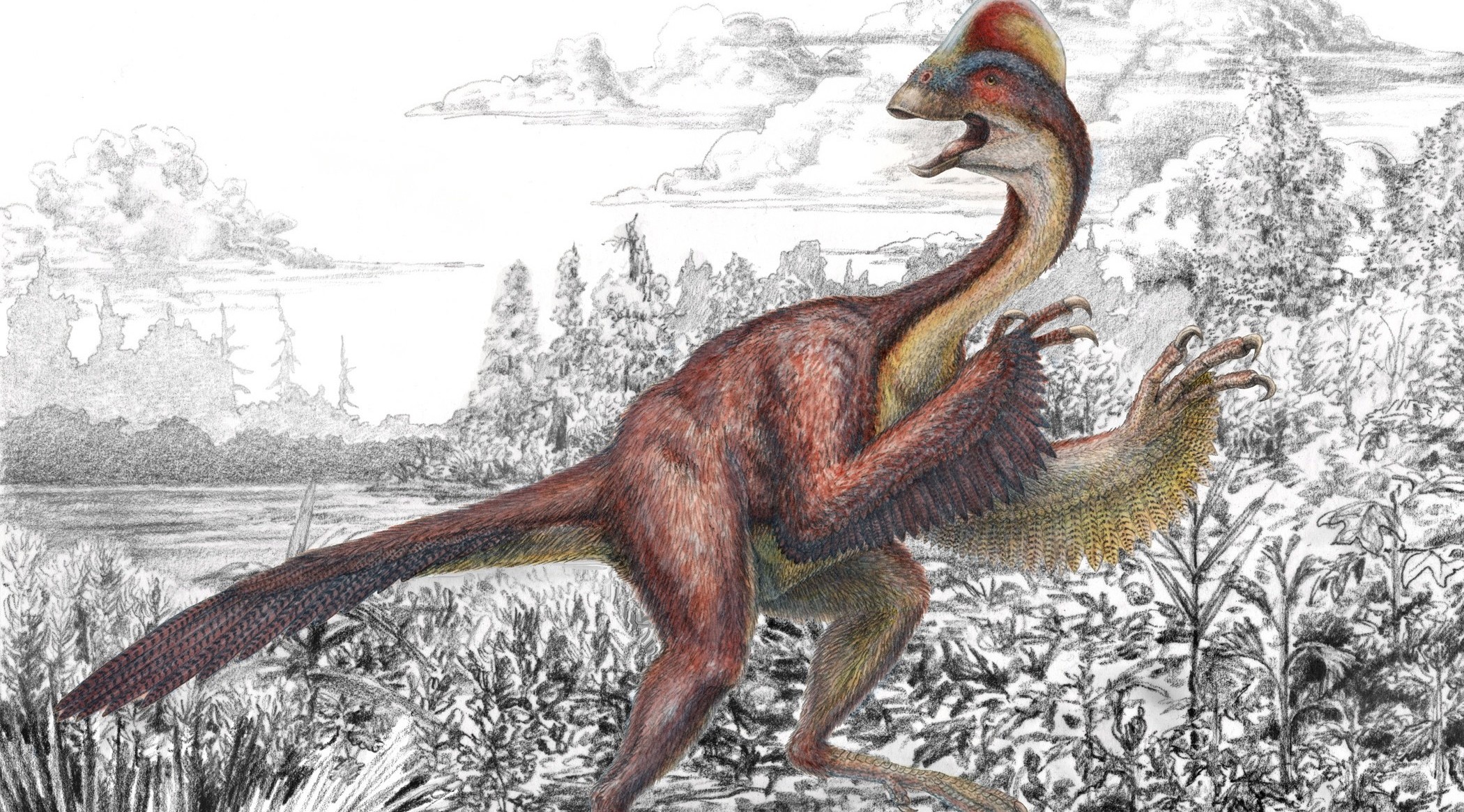
A new species of dinosaur recently entered the official catalog this past week. Coming in at 11 feet long and 500 pounds, this new beast, officially classified in the oviraptorosaur category, has lovingly been nicknamed the “Chicken from Hell” on account of its slight resemblance to a modern day chicken. A very large looking chicken, complete with an extra set of claws that more than explain its violent nickname. The “Chicken from Hell” was recently unveiled in an issue of popular scientific journal Plos One after having been discovered in the Hell Creek formation located in North and South Dakota.
It is, of course, not officially known as the “Chicken from Hell”. Its official name is Anzu Wyliei, named partly after the mythological feathered demon from Mesopotamia and partly after Wylie J. Tuttle, a supporter of the Carnegie Museum of Natural History. Anzu resembles the chicken in more ways than just appearance. Like the chicken, it is incapable of flight despite having wing-like limbs. If you think this dinosaur is unusual looking, you would not be alone. Even amongst its fellows it would be considered weird and different. For instance, it is one of the few species of dinosaur to evolve away from teeth and develop a beak-like orifice.
This discovery is especially exciting because Anzu has been dated back to the end-Cretaceous period, a period that has seen very little dinosaur activity. This lack of activity is primarily attributed to the mass extinction that occurred destroying the dinosaurs as well as a majority of species inhabiting the planet at this time. Because of the catastrophic event attributed to a large meteor impacting the Earth during this period, finding any unknown animal remains from this period is a cause for excitement.
Despite being discovered back in the 1990s, it wasn’t until a third skeleton was discovered that archeologists and scientists were able to put it together. Even after discovering and studying three separate skeletons of this creature, it still took years until they were able to reassemble it into the picture we see today. What’s even more astounding is that these fossils are reported to be the most complete sets found in the entirety of North America and it still took them years to put together, perfectly displaying exactly how difficult of a field of study this really is. It really does explain why advancements in this field happen at a fossil-like pace.
This discovery should provide an entire new way for scientists to look at the evolution of common species in today’s world. Anzu greatly resembles avian creatures of today and could very well be a very distant relative of today’s birds. Scientists believe that Anzu is so directly linked to modern birds, that it may very well have developed feathers of its own. However, no evidence was found to suggest that it possessed feathers. Further study is required before scientists will be able to exactly place this new species into the history and evolutionary time line of the world. Regardless, science buffs and history lovers should view this discovery with great excitement.
By Austin Hopper
Sources:
Washington Post
Plosone
Paleobiology
News National Geographic

